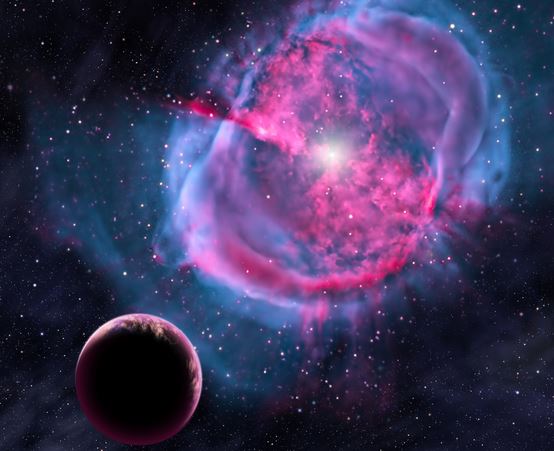NASA’s Kepler Space Telescope has found eight new planets orbiting sun-like stars at just the right distance for liquid water to exist on their surface, astronomers announced on Wednesday.
The eight planets are within the “Goldilocks” zone, which is known by astrobiologists as the Circumstellar Habitable Zone (habitable zone) – the region around a star where planets with sufficient atmospheric pressure can support liquid water at their surfaces. The informal term “Goldilocks” became popular because, as with baby bear’s food, bed and chair, conditions were “just right”.
An exoplanet (planet orbiting a star outside our solar system) needs to receive about as much sunlight as Earth to be in the habitable zone. Otherwise the water will freeze if there is not enough, or boil away as steam if there is too much.
The Kepler Space Telescope’s latest discovery doubles the number of small planets located within the Goldilocks zone of their parent stars.
Two of the planets – Kepler-438b and Kepler-442b – are more similar to Earth than any others detected so far.
Lead author, Guillermo Torres, of the Harvard-Smithsonian Center for Astrophysics (CfA), said:
“Most of these planets have a good chance of being rocky, like Earth.”
The astronomers announced their findings at a press conference at a meeting of the American Astronomical Society.
Of the more than 1,000 verified planets so far found by NASA’s Kepler Space Telescope, just eight are less than twice Earth’s size and within their sun’s habitable zone. They all orbit stars smaller and cooler than our sun. (Photo: NASA)
Kepler-438b and Kepler-442b
The two planets most similar to Earth are called Kepler-438b and Kepler-442b. They both orbit red dwarf stars that are cooler than our Sun. A dwarf star is one that is not a giant or supergiant, i.e. it is a normal star! Our own Sun is a dwarf star – a yellow dwarf.
Kepler-438b circles its star once every thirty-five days, while Kepler-442b does it in 112 days.
The scientists estimate there is a 70% chance that Kepler-438b, whose diameter is 12% bigger than Earth’s, is a rocky planet. Kepler-442b, which is approximately one-third bigger than Earth, has a 60% likelihood of being rocky, as opposed to being a ball of liquid or gas.
Torres said:
“For our calculations we chose to adopt the broadest possible limits that can plausibly lead to suitable conditions for life.”
NASA’s Kepler Space Telescope’s mission is to seek out new planets. (Image: NASA)
Kepler-438b is estimated to have a 70% likelihood of being in the habitable zone of its star. It receives approximately 40% more sunlight than Earth. Venus, for example, receives twice as much light as Earth.
Kepler-442b receives about two-thirds as much sunlight as Earth. Astronomers believe there is a 97% chance it is within the Goldilocks zone.
Second author David Kipping said:
“We don’t know for sure whether any of the planets in our sample are truly habitable. All we can say is that they’re promising candidates.”
Before the discovery of these eight exoplanets, the two most Earth-like planets were Kepler-62f, which gets 41% as much light as Earth and is 1.4 times its size, and Kepler-186f, which is 1.1 times the size of Earth and receives 32% as much light.
An artist’s conception depicting an Earth-like planet orbiting its evolved star that has formed a stunning ‘planetary nebula’. (Image: David A. Aguilar, Harvard-Smithsonian Center for Astrophysics)
In order to validate planets they discover, the team use a computer program called BLENDER to determine whether they really are likely to be planets.
BLENDER was developed by Francois Fressin and Torres. It runs on the Pleaides supercomputer at NASA Ames.
Following the BLENDER analysis, the scientists spent the next year gathering and analyzing data from several sources, including those from adaptive optics imaging, high-resolution spectroscopy, and speckle interferometry, to thoroughly characterize the systems.
They concluded that four of the eight newly validated planets are in multiple-star systems. However, the second (companion) stars are far away and do not significantly influence the planets.
Kepler-438b and Kepler-442b are 470 and 1,100 light-years away from earth respectively. The authors say their distances make additional observations “challenging”.



